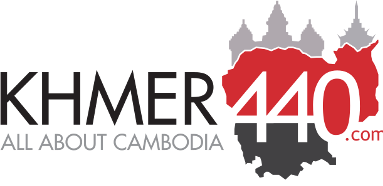King Norodom’s Head – a book review
I want to make one thing perfectly clear: under no circumstances will I mention Cholon Duck. Never. I know why you’re reading this, and I’m not going to give you the satisfaction. You’ll get not a word about Cholon Duck out of me.
I will, however, tell you all about King Norodom’s head. After all, it’s the title of the book. And it’s wholesome and decent.
The king in question, in case you’re wondering, is the founder of modern Phnom Penh, so he matters. This far-sighted and generous monarch established his capital solely here so that future generations could speculate on high-rise condos with views of the Mekong. His people in gratitude commissioned a bronze statue of him on horseback, which they placed on the bank of the river about where the Chaktomuk Theatre is today (subsequently moved to its present location by the Silver Pagoda in the palace compound). Somewhat later, rumours began spreading that the statue was a fake – it was, they said, just a mass-produced Napoleon III with King Norodom’s head on top. Not so! It’s real! There is a story of fraud attached, and you can read about it in chapter 17, but King Norodom’s head is on top of King Norodom’s body.
The story of Norodom’s statue and its head, and how the truth was uncovered, is just one of the fascinating tales in this collection. It’s like a box of chocolates, you can’t stop yourself. Each story is anchored to some physical artefact of the city, and each leads into a history you’d never have suspected. The first chapter for example, begins with a large cast-iron anchor lying in the weeds of the container storage depot at Phnom Penh Port. (The book, by the way, is profusely illustrated). It’s American – there’s an embossed marking that says so – and dates from 1942. What’s it doing here? The story takes us to the last mutiny in US naval history (as recent as 1970, to my surprise), to a prison ship off Chroy Chongvar (if it were still there today it would have a view of the Sokha Hotel and the fireworks on the King’s Birthday), and a very ill-judged attempt by two Americans to join the Khmer Rouge (these things never ended well).
Or another example: Chapter 20 traces the troubled course of Cambodia’s relationship with the US through the successive buildings that have served as the American embassy from 1950 onwards. (Cambodia achieved independence in 1953, but a US legation had already been opened in anticipation). At first the State Department worked out of the Hotel Le Royal, which can thus claim to be the first US diplomatic premises in the city, before settling into a building off Norodom Boulevard near Central Market. The Cold War was under way, and the Americans and the Soviets were competing to see who would be first to give an expensive gift to the new Cambodian nation. The Americans won, finishing the Khmer-American Friendship Highway (Phnom Penh to Sihanoukville) a full year ahead of the Khmer-Soviet Friendship Hospital, but unfortunately the rushed construction meant that within a year it had turned into a chain of pot-holes, a metaphor for all that came after.
What does the Riverside shrine, the one under the flagpole where the annual boat-races are held, have in common with the more blood-curdling Old Testament prophets? See page 50. Where, in 1970, would you go if you wanted a drink in a seedy bar where the proprietor played marching songs from the French Foreign Legion? Page 128 will set you right. Where, in Phnom Penh and surrounds, would you go today if you had a metal detector and were looking for hidden gold? See page 211, but keep an eye out for the police. What’s the connection between the house where King Sihanouk was born and a Japanese Red Army terrorist refusing to get out of a car on the Cambodian-Vietnamese border? It’s on page 291.
So you see, it’s perfectly possible to review this book without mentioning Cholon Duck, not even once.
The author, by the way, is Steven Boswell, an academic, now retired, who taught at Royal University from 2000. As he explains in his Introduction, the book began from his wish to know more about the things he saw around the city. The more he learned, the more he wanted to learn, and so we have this beautiful book, a labour of love from a gifted story-teller, written in a fluent and approachable style that wears its learning lightly. But make no mistake, there is real learning here, and no less a historian than David Chandler provided a foreword. Chandler sums up in these words: “For those living in the city and for people passing through, King Norodom’s Head … is bound to enrich their encounter.” I can only, and whole-heartedly, agree.
(Alright, so you really, really want to know about Cholon Duck. Send the children off to bed first. It’s in the chapter on Madam Chum’s opium den, and it says that Cholon Duck was . . .
(Admin note: We regret that Mr Coggan’s review has to be cut short at this point due to limitations of bandwidth).




Is this for sale in PP?
In Phnom Penh, it’s for sale at Monument Books. Should be available elsewhere around the globe by end Dec or early Jan.
This is nowhere near good enough — we need the whole review as written by Coggan; every last word.